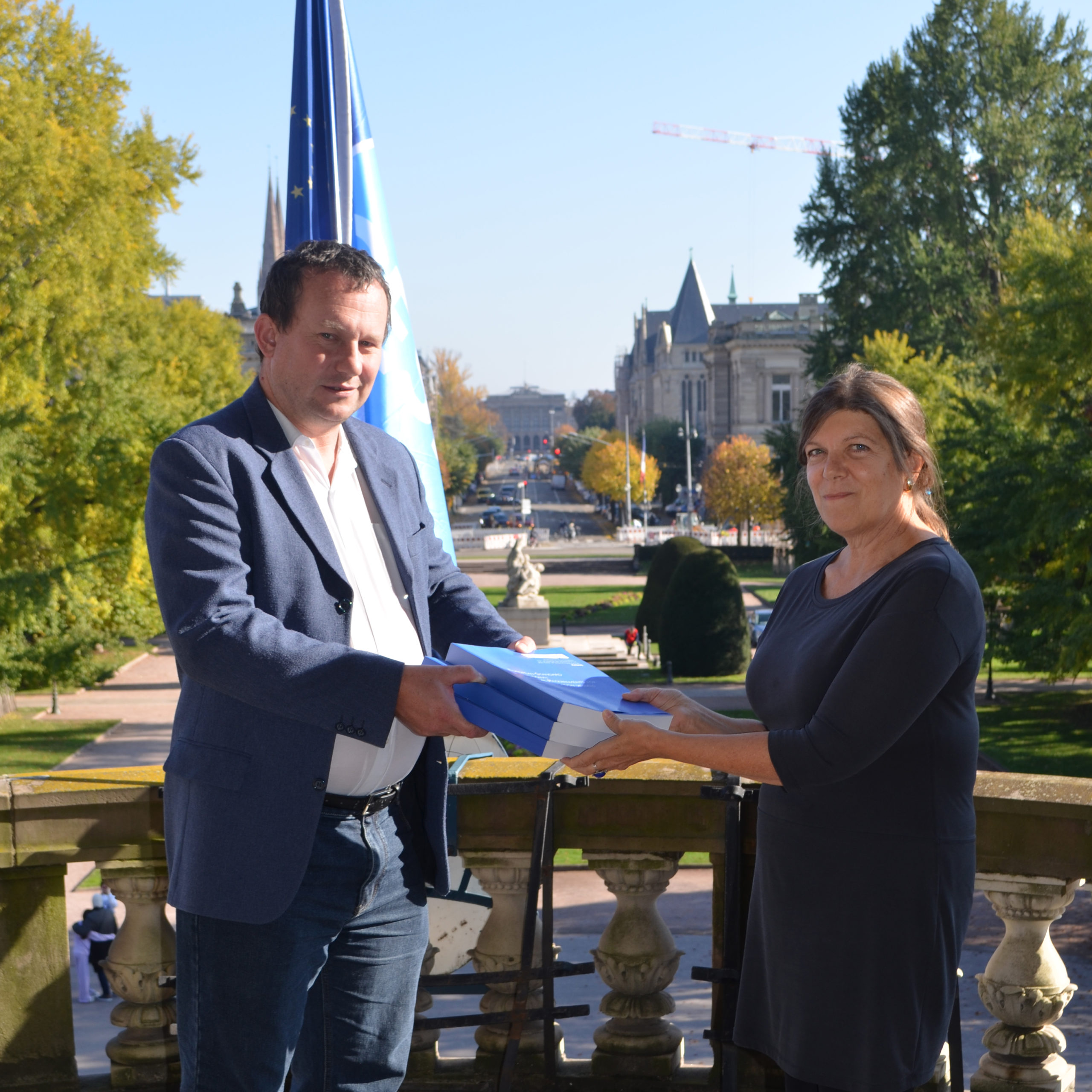CESNI meeting on 28 October 2021
28/10/2021
The European Committee for drawing up Standards in the field of Inland Navigation (CESNI) met online on 28 October 2021, in the presence of its Chair, Mr Vojtech Dabrowski, and members of the Secretariat in Strasbourg. Thirteen Member States (Austria, Belgium, Bulgaria, Croatia, the Czech Republic, France, Germany, Luxembourg, the Netherlands, Poland, Romania, Slovakia and Switzerland), together with the European Commission; the river Commissions for the Danube, Moselle, Rhine (CCNR), Sava; eight approved organisations (CEMT, EBA, EDINNA, ETF, GERC, IVR, ESO, EBU); and the United Kingdom and Ukraine (in their capacity as Observer States) took part in the meeting.
The CESNI shared the ongoing developments in its working groups in the fields of vessel technical requirements, professional qualifications and information technologies. The application of waste-water requirements, the adoption of model examinations for the operational level and the management level, as well as the adoption of the work programme 2022-2024 are some of the key take-aways from the meeting on 28 October.

Mr Vojtech Dabrowski and Ms Marleen Coenen
Activities in the field of technical requirements
Waste-water collection and disposal facilities
The discharging of waste water from passenger vessels is a major issue for the protection of the environment. In this context, the Committee confirmed its intention regarding the application of waste-water requirements to existing passenger vessels. From 2030 onwards, upon renewal of their vessel certificate, all passenger vessels must be equipped with either collection tanks for domestic waste water or appropriate on-board sewage treatment plants (article 19.14 of the European Standard laying down Technical Requirements for Inland Navigation vessels – ES-TRIN). The general derogation for passenger vessels (envisaged where no manifest danger exists) will no longer apply beyond that period. However, a derogation for vessels which do not produce waste water will be introduced. The approved approach will be included in the next edition of ES-TRIN (in 2023/1).
Adoption of a consolidated version of ES-TRIN
The Committee adopted editorial changes to ES-TRIN 2021/1 and decided to publish a consolidated version of ES-TRIN. The amendments correspond to small adjustments with no legal impact, but provide notable linguistic improvements. As a reminder, ES-TRIN 2021/1 will enter into force on 1 January 2022 in the legal frameworks of the CCNR (Central Commission for the Navigation of the Rhine) and the EU (respectively RVIR and Directive (EU) 2016/1629).
Forthcoming amendments of the requirements for passenger vessels as well as for alternative fuels
The temporary working group CESNI/PT/Pax has finalised several amendments of the requirements for passenger vessels (chapter 19), which will most likely be included in the next edition of ES-TRIN (in 2023/1). The update takes into account the experience gained by the inspection bodies as well as the concerns raised regarding small passenger vessels.
The temporary working group CESNI/PT/FC has finalised requirements for the use of fuel cells on board inland vessels. Work is in progress regarding the storage of methanol and hydrogen as fuel.
Engines
In parallel, the CESNI and EUROMOT regularly update their frequently asked questions (FAQ), the aim of which are to help the Inland Waterway Transport (IWT) sector better understand and interpret the applicable requirements for engines (regulation on non-road mobile machinery (NRMM) and ES-TRIN). The Secretariat also keeps up to date the list of Stage V engines, available here: https://listes.cesni.eu/2060-en.html.
Activities in the field of professional qualifications
Publication of model examinations for the operational level (OL) and the management level (ML)
The CESNI agreed to publish model examinations on its website www.cesni.eu. Model examinations for boatmasters, and for persons wishing to become a boatman, able boatman or helmsman, can serve as tools to implement a level playing field for professional qualifications in European inland navigation. The model examinations were also checked by experts during a meeting of exam commissions on 15 September 2021 and were considered to be very useful by specialists on those commissions. Future students may be disappointed though, since CESNI did not authorise the publication of model answers that have also been examined by exam commissions.
New milestones for harmonised examination of competence
Whereas there is already a standard for a practical examination for boatmasters, a practical examination for crew members at operational level (boatman, able boatman and helmsman) has not been yet defined at the European level. The CESNI announced its willingness to adopt such standards in April 2022. Schools all over Europe offering examinations as part of an approved training programme, and exam commissions working under the responsibility of administrative authorities, may already apply the draft standards in their daily operation. This will be possible when the new legal framework for professional qualifications can be applied as from 18 January 2022.
The Committee also examined a model for medical certificates, whose purpose is to document the medical fitness of applicants wanting to become deck crew members. The model indicates whether a future crew member or a crew member who has undergone a periodical medical check-up complies with the criteria for general fitness, hearing and vision. The model should be applied as of April 2022.
New publications and updates in the field of professional qualifications
The CESNI approved the publication of two new explanatory notices, one concerning the basic safety training for deckhands and one concerning the use of standardised communication phrases. These notices, available in four languages, will be published on the CESNI website by the end of November.
Frequently asked questions (FAQ) on the interpretation of the ES-QIN were also approved by the Committee on 28 October. One of the FAQ concerns the use of free text after restrictions and mitigation measures related to medical fitness, for example how the restriction to work on a certain vessel or in certain areas on board a vessel shall be entered on a certificate of qualification. Two more questions on the interpretation of technical requirements of vessel handling simulators have also been validated by the CESNI.
Activities in the field of information technologies
Improved integration of IWT into the logistics chains
The CESNI was pleased to learn more about the hearing on improved integration of IWT into the logistics chain, which took place online on 9 September 2021. The meeting was organised by the working group CESNI/TI (information technologies). The main objective was to identify the necessary evolutions of ES-RIS, in order to facilitate the integration of inland navigation into logistic chains. In particular, exchange of data between shore and vessels, as well as the interface issues linked to it, were examined. The hearing allowed various projects presentations (RIS-COMEX, ST4W, RPIS DYONISUS, SINLOG, IW-NET), an intervention from PIANC, and the collection of the sector’s feedback. The conclusions of the hearing and possible follow up will be discussed during the next meeting of the working group CESNI/TI.
Update and renewal of temporary working group mandates
The Committee decided to update the mandates of the working groups CESNI/PT/FC (technical requirements for alternative fuels) and CESNI/PT/ELEC (electronic equipment and systems), and to disband the working group CESNI/PT/PAX (technical requirements for passenger vessels) which has now finalised its work. In the light of the work programme 2022-2024, the Committee also decided to create two new temporary working groups on the issues of transitional provisions (CESNI/PT/DT) and the new model of certificate (CESNI/PT/MOD).
In the field of professional qualifications, the CESNI also modified and renewed the mandates of the temporary working groups CESNI/QP/QM (quality management) and CESNI/QP/Crew (crew-related requirements). The two working groups have been responsible for supporting work on specific tasks in the CESNI work programme 2019-2021. The changes take into account the challenges of the new CESNI work programme 2022-2024.
Lastly, the mandate of the four temporary working groups of CESNI/TI has been renewed for a three-year period, and in their current compositions. The temporary working groups will continue their work on the standardisation of the River Information Services (RIS). They may also undertake additional tasks in the future, in order to develop ES-RIS as well as the transversality between the various RIS-technologies.
Adoption of the CESNI work programme 2022-2024
During its meeting, the CESNI adopted its work programme for the next three years (2022-2024). Based on the strategic guidelines proposed by the CCNR Secretariat and the European Commission, the ambitious work programme is the result of intensive work of the delegations and consultations with the various inland navigation stakeholders, in particular the approved organisations representing the industry.
The new work programme reflects the priorities of the CCNR and the European Union, and includes a number of tasks related to:
- new technologies and innovation, including the safe use of relevant alternative fuels and propulsion systems, and the skills to handle them, and supporting the transition towards zero-emission;
- modern and flexible manning requirements;
- the digitalisation of inland navigation, including automated vessels, digital documents, navigation and information equipment, as well as electronic tools for recording and exchanging information on crew;
- the revision and development of standards to guarantee a high level of safety in inland navigation and to follow the technical evolution.
The work programme will be published on the CESNI website by the end of November, one month after its adoption.
Chair of the Committee in 2022-2023
The current Presidency for the period 2020-2021, chaired by Mr Vojtech Dabrowski (Czech Republic) and Mr Hans-Peter Hadorn (Switzerland) as Vice-Chair of the Committee, will finish at the end of the year. The CESNI participants paid tribute to the excellent leadership of the Committee and commitment of the current Chair and Vice-Chair throughout the past two years. The Committee thanked Mr Dabrowski and Mr Hadorn for having successfully maintained the activity of the Committee, especially throughout the entire pandemic, and shown the utmost commitment to its activity.
Marleen Coenen, representing Belgium, will take over the Presidency of the Committee from January 2022 for the next two years (2022-2023). Ms Coenen is Head of the Waterways and Inland Navigation Division at the Mobility and Public Works Department. She has many years of experience as member of the Belgian delegation of the CCNR and of the CESNI. She will be supported in her mandate by Mr Ivan Bilić-Prcić, representing Croatia, who will take over as the Committee’s Vice-Chair. Mr Bilić-Prcić is a naval architect and Inland Navigation Division Manager at the Croatian Register of Shipping. The Committee congratulated Ms Coenen and Mr Bilić-Prcić for their unanimous election and wished them every success in the exercise of their future mandates.
Farewell to CESNI’s Executive Secretary
The Committee warmly thanked Mr Bruno Georges, Executive Secretary of the CESNI and Secretary General of the CCNR, for his great and continued commitment to the CESNI in the last 5 years. The members of the CESNI wished him a fulfilling retirement. Mr Bruno Georges will be replaced by Ms Lucia Luijten as from 1 November 2021.
Future meetings of the CESNI
The CESNI is scheduled to meet on 12 April and 13 October 2022. The Committee very much hopes that its members will then once again meet in the Palais du Rhin, in Strasbourg.

